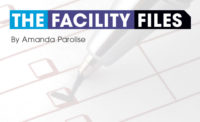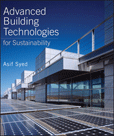Critchfield Mechanical, Inc. an HVAC engineering firm in Menlo Park, CA needed a cost-effective and energy-efficient perimeter zone ventilation solution. The solution had to accommodate changing heating and cooling demands of the perimeter zone in the UFAD system of the Capitol Area East End Complex, a new 460,000-sq-ft office building commissioned for the State of California, Department of General Services.
Raised-floor construction and UFAD technology have been gaining popularity in the United States as developers strive to provide office space that can be quickly upgraded with new data transmission cables and that can easily be reconfigured into comfortable working space as occupants’ needs change. The perimeter heating and cooling system for this project had to be quiet, reliable, and easily controlled with a wall-mounted thermostat and/or the building’s electronic control system. The system also had to have the ability to operate in a number of different modes (normal day and nighttime operations along with a morning warm-up cycle).
Many types of perimeter HVAC systems have been tried in the past, but none of the traditional methods seemed able to satisfy the stringent engineering requirements for this project.
FAN TERMINALS A PERFECT FIT
Critchfield Mechanical determined that the most cost-effective way to heat and cool the perimeter areas of the Capitol Area East End Complex would be to use Greenheck’s variable speed, energy-efficient underfloor fan terminals (UFT). The model UFT produces twice the amount of air as its competitors, reducing the number of fans needed on the job. Only one hundred and sixty-eight (168) UFTs with hot water heating coils were required to satisfy the perimeter zones of this 460,000-sq-ft building. The building was designed with a 16-in. raised floor height and Mark Vranicar, P.E. of Critchfield Mechanical, Inc. selected the UFT Series 13 to accommodate the building’s perimeter air needs.
Raised-floor projects can be set up in a number of configurations to handle the supply and return air needs. Vranicar chose a built-up system as opposed to a standard AHU. The Capitol Area East End Complex includes three built-up systems in three different sections of the building. Each built-up system consists of three connecting rooms: an intake/mixing air plenum room, a fan/supply air plenum room, and a return air plenum room. These rooms are used to control the amount and type of air that will be moved throughout the building.
Two Greenheck centrifugal blowers were used to supply 63°F to 65° air down a duct chase that branches out to each floor. To keep a constant pressure in the supply air duct, the speed of the centrifugal blowers is controlled by a VFD connected to a differential pressure controller at the bottom of the duct chase.
After the air is delivered to each floor, it then travels through an “air highway” where it is supplied to the underfloor plenum through a number of calibrated dampers. The calibrated dampers modulate and are used to keep the underfloor plenum at the set static pressure. A thermostat is wired to the differential pressure sensor and is used to control the temperature of the building’s interior zone by increasing or decreasing the static pressure setting of the differential pressure controller. This, in turn, increases or decreases the amount of air supplied to the interior zone of the building through round diffusers.
PERIMETER ZONE COMFORT
Because the perimeter loads in buildings can change drastically, Vranicar designed a system at the perimeter that includes Greenheck’s UFTs in both ducted and non-ducted configurations. The UFTs pull air from the interior zone plenum and redistributes it to the perimeter areas of the building. In both configurations, a wall-mounted thermostat positioned near the fan in the perimeter zone controls the UFT. This enables occupants to regulate the temperature.
An open office concept made up 85% of the perimeter zone of the Capitol Area East End Complex. Air was supplied to these areas through ducted UFTs that are placed 8 ft from the perimeter wall. Each UFT has a 30 in. plenum box attached to its outlet. Spiral duct is attached to the plenum box, making a tee, and allowing the air to be delivered via flex ducts to a number of linear grille plenums mounted in the walls. The linear grille is mounted in a window soffit to allow the workstations to be placed right up to the wall while allowing air to be discharged at the base of the window. One UFT supplies up to six linear grilles designed to handle a maximum of 210 cfm each.
The non-ducted UFTs were used to supply air to the large conference and break rooms in the perimeter zones of the building. A plenum wall was built directly beneath each room where a UFT is used to pressurize the plenum. Air is delivered to the occupied space through round diffusers. A wall-mounted thermostat in the specific room controls these UFTs.
With the changing loads of the perimeter zone, heating or cooling may be desired so the UFTs are equipped with a hot water reheat coils. If the heating mode is desired, the thermostat will send a voltage signal setting the fan speed of the UFT to its minimum and open the hot water control valve. The control valve is powered with the 24-V transformer supplied in the UFT’s control center. The UFT blows air through the hot water coil, heating the air and delivering it to the perimeter zone. Once the desired temperature in the perimeter zone is met, the thermostat will send a voltage signal to the fan returning it to its normal operation mode and to the control valve, restricting water flow. When cooling is desired, the thermostat will send a voltage signal to the UFT increasing its fan speed to supply more 63º to 65º air to the perimeter.
Mark placed the return air system in the pre-hung ceiling plenum. Return air grilles are placed in the position of ceiling tiles as needed. To exhaust air from conference and break rooms, an acoustical transfer duct is mounted in the dividing wall above the ceiling tiles and allows the air to be pulled into the major return air plenum. Once in the return air plenum, the air is pulled past a string of smoke detectors, through fire/smoke dampers, and into the duct chase.
The Capitol Area East End Complex was not designed exclusively as a raised floor application. There are some areas where a concrete slab is poured to simplify the transition between these areas and the adjoining spaces. The main floor of the building along with the rest rooms and the elevator lobbies are designed with a concrete slab, and utilize a conventional overhead air distribution system for its supply and return air needs.
THE RESULTS
The result of the project was a great success. The building contractors felt that the UFAD system was much easier to install then a conventional overhead air distribution system. The reason for this is because none of the work involved reaching over their head. The raised-floor system also reduced the time that was needed to install the communication and electrical cables.
Occupants of the building were also impressed with the raised floor system design. They like the ability to have individual control over the amount of air being supplied to their space. Occupants also noticed a drastic improvement in air quality from their existing building. As designed, this project will exceed energy standards mentioned in Title 24 Energy code by over 30%. The buildings design is projected to save taxpayers $400,000 annually in energy savings alone.



